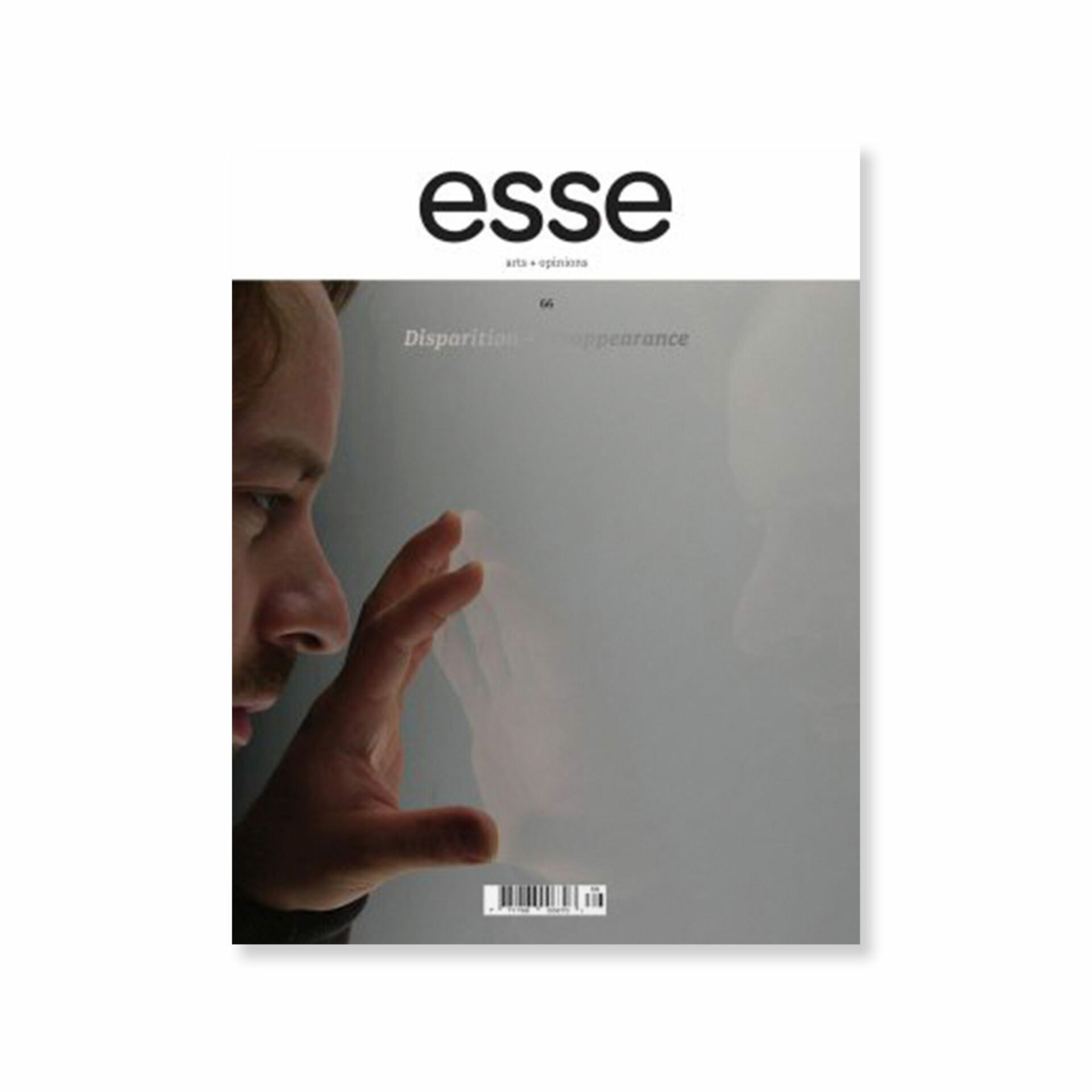
photo : David K. Ross
In a recent series of photographs titled HVACuus, David K. Ross captured steam clouds emanating from institutions which conserve artworks. In photographing these vaporous emissions that are produced when ambient cold air comes into contact with warmer air released by heating and ventilation systems,1 1 - Hence the acronym HVAC for Heating Ventilation & Air Conditioning.the artist evidently inscribes his work within a long lineage of visual works that draw on the recurrent iconographic motif of the cloud. In a photograph taken around the Musée d’art contemporain de Montréal one sees a segment of architecture in the picture’s right side and a small patch of blue sky above it. The rest of the picture plane is occupied by a cloudy substance. In the series another work—dedicated to the emanations of the Clark Institute in Williamstown, Massachusetts—shows clouds almost completely suffusing the building and the trees, which one can barely make out. Despite the sense of invasion that this concentration of clouds conveys, Ross does not attempt to send a message on climate change or air pollution for that matter.
His photographic gesture seeks, rather, to document the release into the wild of microparticles resulting from the artworks’ decomposition. This singular poetic vision is based on the idea that every thing slowly deteriorates, even if this remains invisible to the naked eye. If the poetic image is clear, it is nevertheless difficult to understand how the phenomenon works and what underpins its organization. One can, however, easily imagine that this deterioration resides in the decomposition of the work’s material elements into fine dust. These minuscule particles floating in the exhibition space would thus be caught by the air exchange devices and expulsed to the exterior of the premises.
In this sense the photographs would not only be bearing witness to the museum’s incapacity to completely conserve the artifacts that have been entrusted to it, but also taking over the institution’s function in order to immortalize the traces of the works’ disappearance. Yet, no more than the museum, the photographic apparatus is not really able to stop time, to crystallize it and hence to really guarantee the preservation of these works. Actually, what Ross’ work tells us is that all creation is based on a loss. To repeat an old adage, which was used as the title of the first Québec Triennial organized by the MACM and where another series of works by the artist were presented, nothing is lost, nothing is created, everything is transformed.
In the series titled Dark Rooms, which was exhibited during the Triennial, Ross photographed storage spaces belonging to artists and museums. In bringing an image of one of their private spaces into the view of all, these photographs unveil an “usually invisible” aspect of the spaces’ owners who are thus portrayed in a singular way. In these large-scale works the opacity of the images is such that one has the impression of being in front of immense black surfaces. The sought-after effect is to have the visitor experience conditions similar to that of seeing in the dark.2 2 - On his website the artist explains: “As when entering a darkened room, the viewer must allow their eyes to adjust to the subtleties of the image in order to ‘see into’ the darkness of the photograph.” http://graphicstandards.org/darkrooms/index.htm The temporal indicator that appears in the title of the works, and which corresponds to the exposure time, may make one believe that one must invest just as much time to have access to the images’ content. A quick calculation should lead anyone standing before the works to hope that this is not the case. For the photograph Thomas McIntosh/Emmanual Madan: 691,200 seconds, this would represent 192 hours, while for the one titled Musée d’art contemporain de Montréal (vide sanitaire): 223,200 seconds, one would have to spend 62 hours before the photograph.


David K. Ross, Martha Fleming/Lyne Lapointe: 50,400 seconds, 2008.
photo : David K. Ross
However, considering that very few people are nyctalops, it clearly appears that Ross wants to oblige the visitor to be patient and to take far more time than usual to examine and scrutinize the works. In taking the time to let his/her eyes get used to the darkness, the viewer hopes to discover what lies hidden in the depths of this darkness, and little by little begins to see the outlines of the rooms in which different things are stored. At this stage, nobody is able to ascertain whether it is the places or the objects that one should pay attention to. It is only once one takes into account that the project consists in photographing the storage spaces of artists and institutions, which conserve artworks, that one can deduce that one ought to look particularly at the objects. In considering that the shots were taken behind closed doors in full darkness and illuminated only by minute light infiltrations slipping through the tiny interstices around the room’s openings, the notion that these objects have been left unto themselves slowly emerges.
One must therefore be less concerned with what is being conserved than the gesture of conservation as such. In a book dedicated to the need to conserve and collect in the West, Marc Guillaume points out that these “conservation practices have their origin in situations where a suture must be carried out in order to overcome the ordeal of a lack.”3 3 - Marc Guillaume, La politique du patrimoine (Paris: Galilée, coll. «L’espace critique», 1980), 60. (Our translation) The accumulation of these objects are thus to be read as the function of a symbolic mourning. Guillaume continues: “They are an object of mourning, and this explains their relative ‘invisibility.’ For they are for the most part put out of the way, hidden, half lost and forgotten, and rarely ‘visited’.”4 4 - Ibid., 61. Let us not forget that some of the shots took over eight days of exposure and that during all of this time nobody entered the room. These storage rooms are not so much sarcophagi for artworks as they are reliquaries containing objects that carry a memory and which can barely be touched by light, hence the need to plunge them into darkness.
The photographic prints of the Dark Rooms series reveal themselves to be a means whereby the repressed can rise back to the surface of the visible. Ross’ project here shares a number of elements with psychoanalytic work, in the sense that photography develops a picture by bringing the dark areas to light.5 5 - This possibility did not escape Freud’s attention who used the photographic model to illustrate psychological phenomena. See Sarah Kofman, Camera Obscura: Of Ideology, trans. Will Straw (Ithaca, NY: Cornell University Press, 1998), 24. However, the photographic exploration that he has undertaken does not limit itself to shedding light on an uncommon or even somber side of the people who accepted to provide him with access to a corner of their intimacy, it also allows visitors to take a look at what lurks in the shadows, in their own shadows. Through the experience conveyed by a reading of these works the visitor thus lives a simulated—according to the artist’s wish—entry into a dark chamber which s/he can furnish with projections of his/her fears and fantasies, and rediscovers the disquieting power of images to offer a glimpse into the unseen.
[Translated from the French by Bernard Schütze]



